When you purchase through links on our site, we may earn a commission at no additional cost to you. Learn More
The majority of ATVs on the market today come equipped with electronic power steering (EPS). Many ATV riders, myself included, will never go back to manual steering after experiencing the advantages power steering has to offer.
But how does ATV power steering work? ATVs use direct link electric power steering (EPS), where an electric motor assists the rider in turning the wheels. Sensors register the position, and what torque is being applied to the steering column. A computer module then controls the direction of and how much torque the motor needs to apply.
Before we look at the specifics of ATV power steering systems, it’s a good idea to know the basic principles of how any power steering system works.
The primary purpose of a power steering system is to reduce the physical effort required to turn the steered wheels.
Another great selling point for having power steering on an ATV is how it reduces handlebar whip. The motor cushion the forces that transfers from the wheels and up to the handlebars from hitting rocks and other objects. This feature is especially useful if you often find yourself riding in rough terrain.
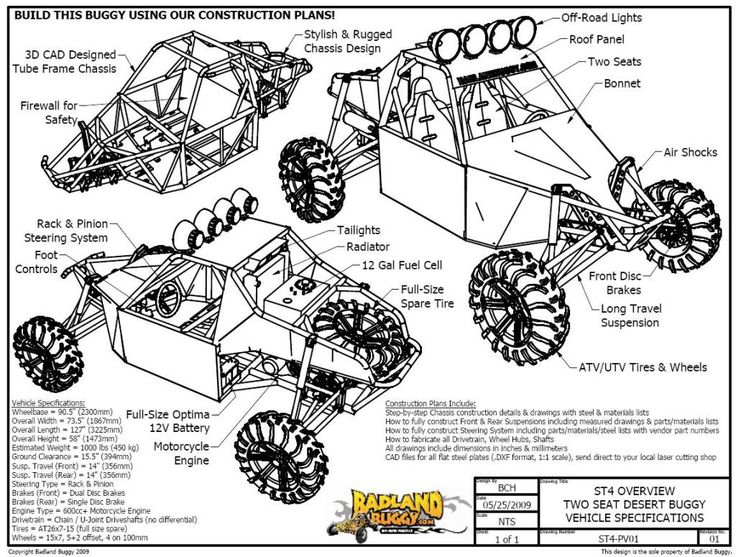
But the mechanics behind what makes the wheels turn are not all the same. There are, in fact, quite a few variations of power steering systems out there.
The unit that provides the extra steering power is called actuators, where the most common types are electric and hydraulic.
The job of the actuator is to convert and enhance the rotational motion from the steering column into a linear motion that goes out to the steered wheels.
Some steering systems are designed with a direct mechanical link from the steering column and out to the steered wheels.
A solid steel shaft goes from the handlebar and down to the actuator, through metal gears inside the actuator and then out to the steered wheels.
With a system like this, it is still possible to turn the wheels even if the actuator stops working or the system for some other reason fails in providing steering assistance.
But with a failed system, it will require a much higher physical effort from the rider to turn the wheels.
Similarly, if the hydraulic pump on a hydraulic system breaks, it is still possible to turn the wheels, but it’s much harder to turn the steering wheel
The backup of having a direct mechanical link acts as a nice safety feature that may help to prevent accidents.
Non-direct link systems have no mechanical connection between the steering column and the wheels. It uses sensors that register movement in the steering column.
An electric signal is then sent via an electrical wire, through a small computer for processing, before going down to the power steering unit. These are known as drive-by-wire systems.
The sensors tell the power steering unit which direction, how fast, and how powerful it should turn the wheels. With no direct link, you are not able to turn the wheels if the electronics fail.
ATVs use what is referred to as a direct-link electronic power steering system.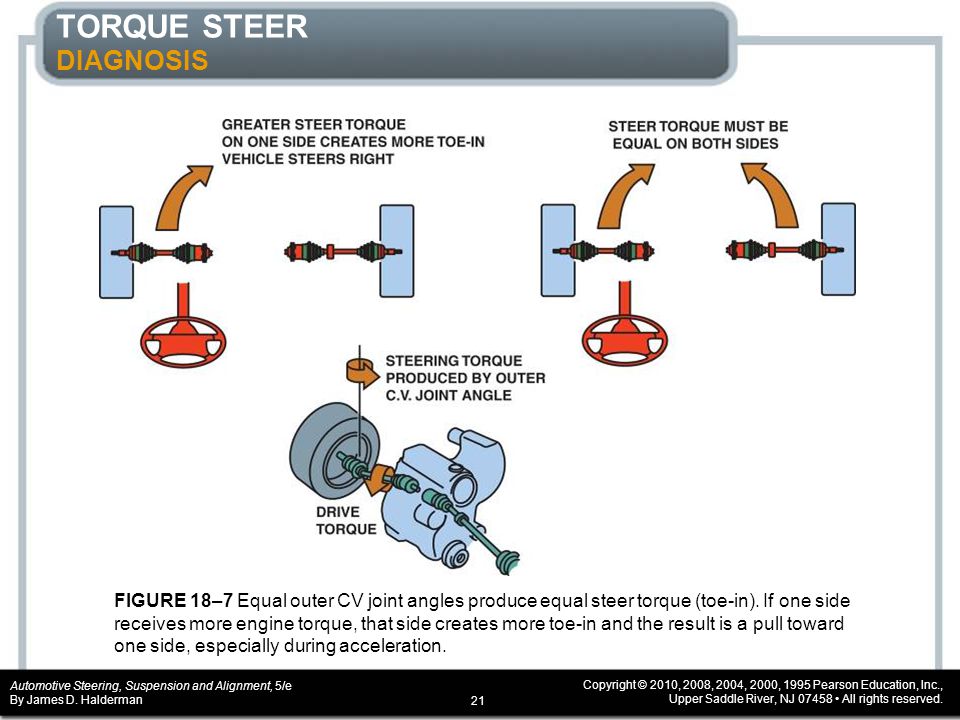 It consists of these main components:
It consists of these main components:
The rider applies the input force to the system through the handlebar.
The input force gets transferred from the handlebar and down to the power steering assembly through the steering column.
The assembly consists of these components:
A unit that processes the signal coming from the torque sensor, before sending it back down to control the electric motor.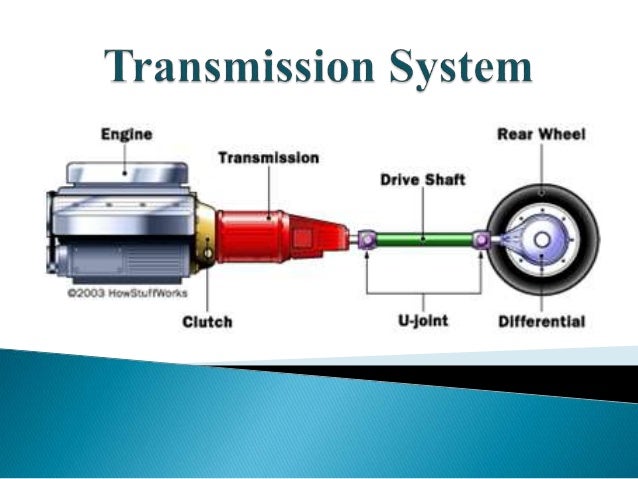 The signal coming from the ECU tells the electric motor what direction, how fast, and with what torque it should turn.
The signal coming from the ECU tells the electric motor what direction, how fast, and with what torque it should turn.
Transfer the linear motion from the power steering assembly and out to the wheel hubs, which then turns the wheels.
All ATV power steering systems use the basic components listed above. In principle, they all work the same way.
But, there are some variations between the brands in actual user experience. The most noticeable difference is how they control and adjust how much power the system provides.
Different riding situations require different amounts of force to turn the wheels. When you ride at higher speeds on smooth surfaces, you need very little help from the electric motor to turn the wheels. But when you do some technical riding in deep mud or rough terrain, much more torque is required to change the direction oft he wheels.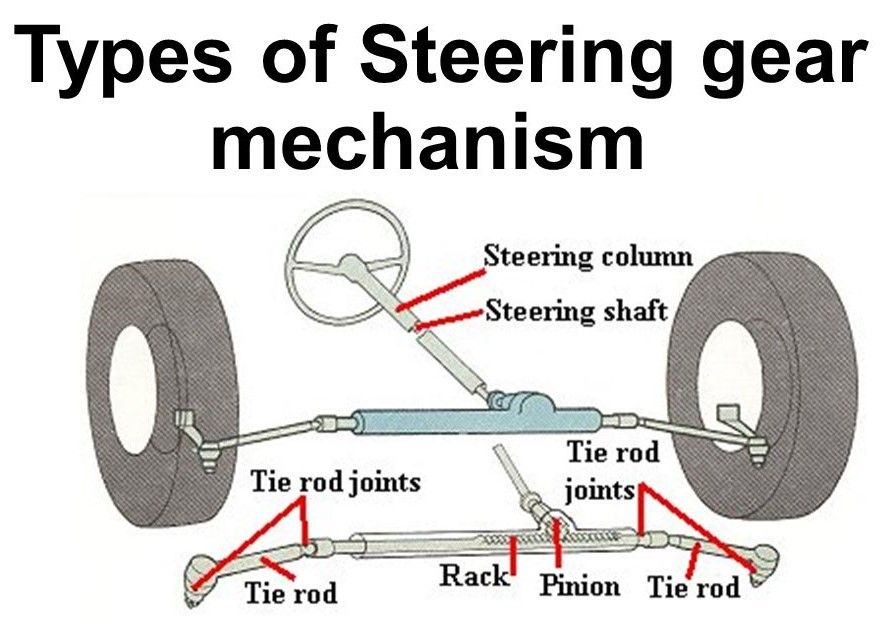
The same applies when changing to different wheel sizes. You need more torque to turn larger wheels.
So the power system should be able to adapt for better user experience in various riding situations.
Polaris, for instance, offers a system that uses sensors to tell how much force the system has to provide at any given moment. A so-called variable-assist power steering system.
The system then automatically adjusts the torque coming out from the power steering unit. This works flawlessly for the most part, and the rider doesn’t even notice the adjustments that the system makes.
The ECU on a Polaris power steering system can be found on top of the power steering assembly.Can-Am uses a slightly different approach. Their tri-mode dynamic power steering (DPS) system offers three levels of power output for the driver to choose from. With the push of a button, you can choose between low, medium, and high steering output power.
I prefer the Polaris type because it adapts automatically. Others prefer the ability to adjust themselves. In the end, it all boils down to personal preference.
There are pros and cons to all of the different variations of power steering systems available. These factors determine which system is better suited for various vehicles.
When choosing and designing power steering systems for an ATV, there are a few important factors the designers must aim for:
 There is a belt-driven hydraulic oil pump, oil, hoses that ads up quite the weight.
There is a belt-driven hydraulic oil pump, oil, hoses that ads up quite the weight.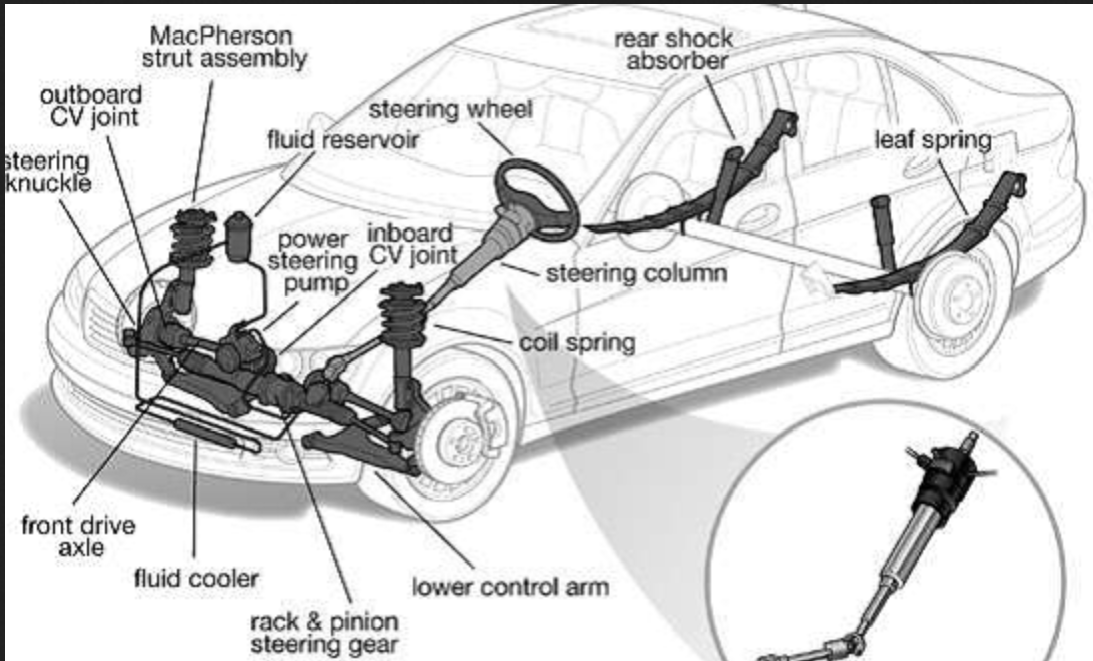
By this point, you may be wondering whether spending the extra money on power steering for your ATV is really worth it?
There are aftermarket kits available that enable you to install power steering on almost any ATV.
When an ATV power steering for no apparent reason stops working, it is often because the sensor that’s supposed to register the position of the wheels has lost track of them. When this happens, the system shuts down as a safety measure.
To fix the issue, stop the ATV and turn the key to the OFF position. When you start the bike again, the sensor will regain control of the wheel position, and the system should be working correctly again.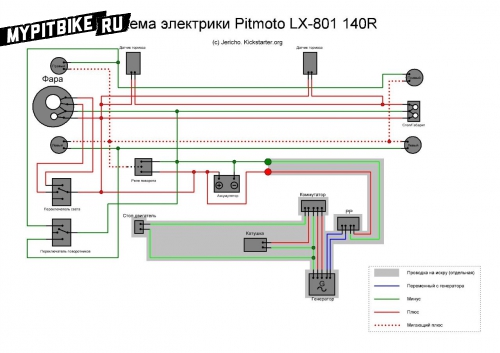
Most four-wheelers on the market today have power steering as an option. The cheapest models, however, do not have this system available.
When an ATV has EPS, it means that it has electronic power steering. A small electric motor enhances the force you apply to the steering handle, making the ATV much easier to steer.
Many riders think having power steering is very important. Power steering is beneficial to prevent fatigue from longer ATV rides, as well as for riders with mobility issues. When installing tracks on an ATV, having power steering is a must.
You should be able to feel how the power steering system helps to turn the wheels on an ATV that has this system installed. At the bottom of the steering column, there will be an EPS unit on ATVs that has power steering.
Vehicles are getting more technologically complex, physically larger, and wildly heavy — I’m looking at you, GMC Hummer. Some of that is due to increased safety standards for rollover risk, offset hits, and the need for high-strength steel in a vehicle’s crash structure, but safety is not the only cause. There’s also the abundance of electrified offerings that added weight due to dense battery systems.
Some of that is due to increased safety standards for rollover risk, offset hits, and the need for high-strength steel in a vehicle’s crash structure, but safety is not the only cause. There’s also the abundance of electrified offerings that added weight due to dense battery systems.
No matter the reasoning behind this trend of scaling up, the result is the same: crappy handling. Weight and size make for horrendously slow directional changes. The old adage of the difficulty in course correcting a ship comes to mind. Consumers, however, still demand sports-car handling from their 6,000-pound Rolls-Royce Cullinans, which is why four-wheel steering has quickly become one of the mechanical mainstays of the automotive world.
The Drive and its partners may earn a commission if you purchase a product through one of our links. Read more., TeslaThe term four-wheel steering has a few variations, such as all-wheel steering and rear-wheel steering (as in Tesla’s latest Cybertruck announcement). With so many terms and even brand names floating out there, it can get mighty confusing for the average person thumbing through the latest Porsche brochure.
With so many terms and even brand names floating out there, it can get mighty confusing for the average person thumbing through the latest Porsche brochure.
To better shed light on rear-wheel steering, which was invented in 1893, The Drive’s Guides & Gear section put together the ultimate explainer on four-wheel steering systems, how they work, who makes them, and how they affect your ride’s performance. Let’s get rollin’.
The Bentley Continental GT's rear axle. , BentleyRear-wheel steering is a mechanism that, when the steering wheel is turned, actuates the rear wheels’ angles and either turns them in tandem with the front wheels or in the opposite direction to better increase a vehicle’s low- or high-speed agility.
We’ll get into the different types of rear-wheel steering systems in a moment, but the general premise of these systems is using a set of hydraulic or electric actuators to change the toe of the rear wheels.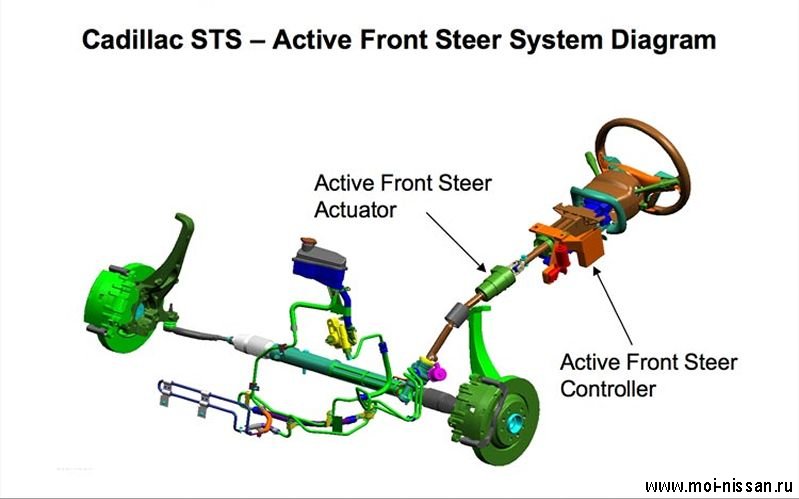
Toe refers to the angle a wheel is pointed in or out from the car, hence the terms “toe in” and “toe out.” Toe can also be described as negative and positive. In most situations, toe refers to a car’s front wheels and, depending on whether both wheels are pointed in or out, it affects the car’s high-speed stability (toe in) or low-speed agility (toe out).
In rear-wheel steering, the vehicle’s system changes both rear wheel’s toe in tandem, which means the rear wheels move right or left in unison so they’re pointed in the same direction. This is the complete opposite of how toe works on a vehicle’s front wheels.
Acura's P-AWS system shown in a cutaway., AcuraWhile each system is unique, the resulting movement from the rear tires in four-wheel steering is exactly the same across different systems. When the driver turns the steering wheel at low speeds, the front wheels turn in the direction of travel while the rear wheels turn in the opposite direction, effectively reducing the car’s turning circle.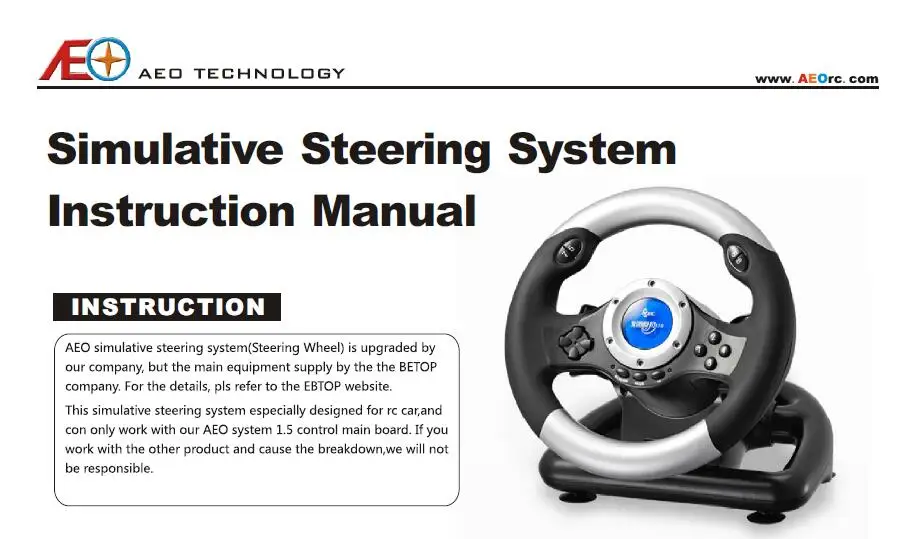 This makes low-speed maneuvers quicker and easier.
This makes low-speed maneuvers quicker and easier.
Steering at higher speeds turns both the front and rear wheels in the same direction for increased high-speed stability. What that means in the performance world is you can have a long, somewhat heavy vehicle such as a Porsche Panamera keep up with a sports car with a shorter wheelbase such as a Porsche 911.
These systems also give larger, heavier vehicles better performance than they would have if only the front wheels turned. This is seen in examples such as the Lamborghini Urus, Bentley Flying Spur, and the Mercedes-Benz S-class.
Different manufacturers have different solutions to rear-wheel steering, although they all serve the same purposes. Some rely on mechanical-only systems, such as Nissan’s old HICAS (High-Capacity Actively Controlled Steering) system, while most utilize electro-mechanical versions, such as Audi’s Dynamic All-Wheel Steering system, Porsche’s Rear-Axle Steering, and the Active Kinematics Control (AKC) systems supplied by ZF to manufacturers such as Ferrari and Cadillac.
Some rely on mechanical-only systems, such as Nissan’s old HICAS (High-Capacity Actively Controlled Steering) system, while most utilize electro-mechanical versions, such as Audi’s Dynamic All-Wheel Steering system, Porsche’s Rear-Axle Steering, and the Active Kinematics Control (AKC) systems supplied by ZF to manufacturers such as Ferrari and Cadillac.
Again, these two systems work virtually identically by changing the rear wheels’ toe in or out, but they differ on what actuates them. In a mechanical system like Nissan’s HICAS, which hasn’t been used in Nissans since the R34-generation GT-R or in Infinitis since the G37, hydraulics powered by the power-steering pump were used to actuate the wheels. Speed sensors would then be used to determine which way the rear wheels would turn and how much. Honda’s Prelude Si 4WS had a similar system.
Not the typical area for a Roller., Rolls-RoyceElectromechanical four-wheel steering systems are now far more common and more advanced than those earlier versions. Controlled by the car’s ECU and a number of sensors along its drivetrain, today’s four-wheel steering systems offer far more precise wheel placement, angles, and capabilities than their predecessors.
Controlled by the car’s ECU and a number of sensors along its drivetrain, today’s four-wheel steering systems offer far more precise wheel placement, angles, and capabilities than their predecessors.
Although the basic result is the same, manufacturers also differ in how much steering angle the rear wheels allow, ranging from 1 to 15 degrees.
Here’s the genesis of four-wheel steering in the popular zeitgeist, the O.G. four-wheel-steer sports cars.
The rear subframe of the Super HICAS system., NissanThough Nissan’s HICAS system is known for its use in the Skyline GT-R platform, it wasn’t the first to get it. The system was first shown in 1985, but its first practical application was on the 1986 Skyline GTS.
HICAS was developed at Nissan by the father of the Skyline, Shin’ichiro Sakurai. The chief engineer worked for Prince before it was incorporated into Nissan and was heavily involved in the wild R380. He was also famous for his way with words. That goes for his description of how he envisioned HICAS.
Naganori Ito, the person Sakurai chose to eventually succeed him, once described what his mentor wanted from the HICAS system:
“The basic philosophy of the Skyline is to deliver reliability and outstanding driving performance. The ideal is a car that is absolutely true to the driver's intentions. It's the same as a horse and rider becoming one when the rider is on the horse's back and the horse is in motion. A horse generates propulsion by pushing off with its back legs and applying torque to move itself forward. It's quite natural. This is a good example of the rear-wheel-drive system in cars. But if you observe the movement of a horse more closely, you see that it also pushes off the ground with its front legs, and it also controls the direction of its movement with its back legs. To duplicate this, cars need four-wheel-drive and four-wheel-steering systems. These are the functions of the ATTESA and HICAS systems.”
To duplicate this, cars need four-wheel-drive and four-wheel-steering systems. These are the functions of the ATTESA and HICAS systems.”
Nissan explains how HICAS works like this:
“Earlier HICAS versions used hydraulics to steer the rear wheels. The hydraulic system was powered by the power-steering pump and used speed sensors to determine how much and in which direction to steer the rear wheels. Later versions, called Super HICAS, moved to an electric actuator for the rear steering rack, making the system much lighter. The Super HICAS uses input from a speed sensor and steering-wheel-angle sensor through the system’s HICAS computer to determine how quickly you’re entering a turn and adjusts the angle of the rear wheels to match the driving conditions. HICAS and Super HICAS rear-wheel steering is limited to about one degree in either direction.”
In addition to the Skylines, Nissan’s Z32-generation 300ZX, 180SX, and 240SX, as well as Infiniti’s M35, M45, Q45, and Q37 were also specced with HICAS and Super HICAS.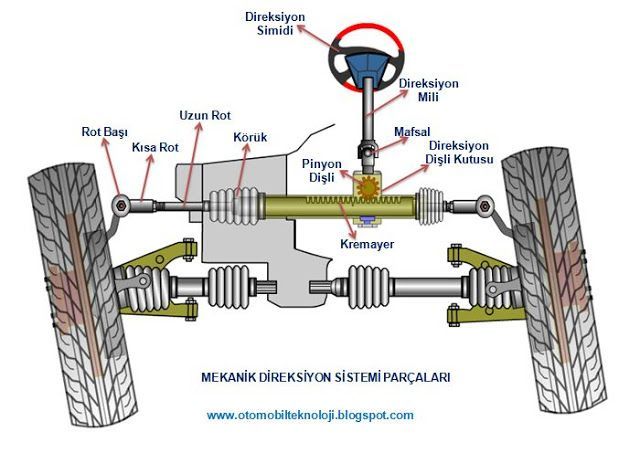
The Prelude Si 4WS isn’t exactly something you’d think Honda would bring out in the late 1980s. On second thought, if you consider much of that period was Escobar-produced neon, then a hot economy-car-based four-door with all-wheel steer makes all the sense in the world.
The basic premise of the Prelude Si 4WS’s four-wheel steering system came out of Honda’s desire to “propel the handling and maneuverability of the automobile into a new dimension.” Honda began developing the Prelude’s 4WS system in 1977, which produced a steer-angle-dependent four-wheel steering system. Purely a mechanical system, the Prelude’s four-wheel steering used two steering gearboxes, one at the front and one at the rear with a center shaft mechanically linking the two.
How the Prelude Si 4WS works., HondaHonda sent over the Prelude Si 4WS’s original news release, which had a detailed description of how the system worked.
“When the driver turns the steering wheel, the rack-and-pinion mechanism in the front steering gearbox causes the rack to move laterally,” according to the release. “This rack stroke steers the front wheels. At the same time, it rotates an output pinion shaft via another rack and pinion housed inside the gearbox. This output pinion shaft transmits the rotation of the steering wheel to the rear steering gearbox via the center shaft. A stroke rod inside the rear steering gearbox moves in an axial direction to steer the rear wheels via the tie rods.”
How that worked in relation to the car’s speed is even wilder.
“For steering-wheel inputs of less than about 140 degrees from the straight-ahead position, the output stroke moves in one direction,” states the release. “For angles greater than that, the stroke and the relative motion at the rear gradually and smoothly diminish and eventually turn the opposite direction. Thus, the rear-steering gearbox contains a mechanism that progressively reverses the direction of output in response to the magnitude of the steering input. ”
”
Honda adds: “Mechanically, when the steering wheel is initially turned away from the straight-ahead position, the rear wheels steer in the same direction as the front wheels. But, when the steering input is increased and the wheel is turned by more than a specified amount, about 240 degrees, the rear wheels then start to steer in the opposite direction.”
When Road & Track tested the Prelude Si 4WS in 1987, it actually outperformed a Porsche and a Ferrari in a slalom test. Honda’s 4WS system in the Prelude soldiered on in the following two generations, although the Prelude’s final generation was a Japan-only option and only in the Si and SiR models.
Period correct., MitsubishiAlthough we only know the mighty Mitsubishi 3000GT VR-4 in the United States, its Japan-only GTO lineage can be traced to the Galant VR-4 and the introduction of Mitsubishi’s Dynamic Four system.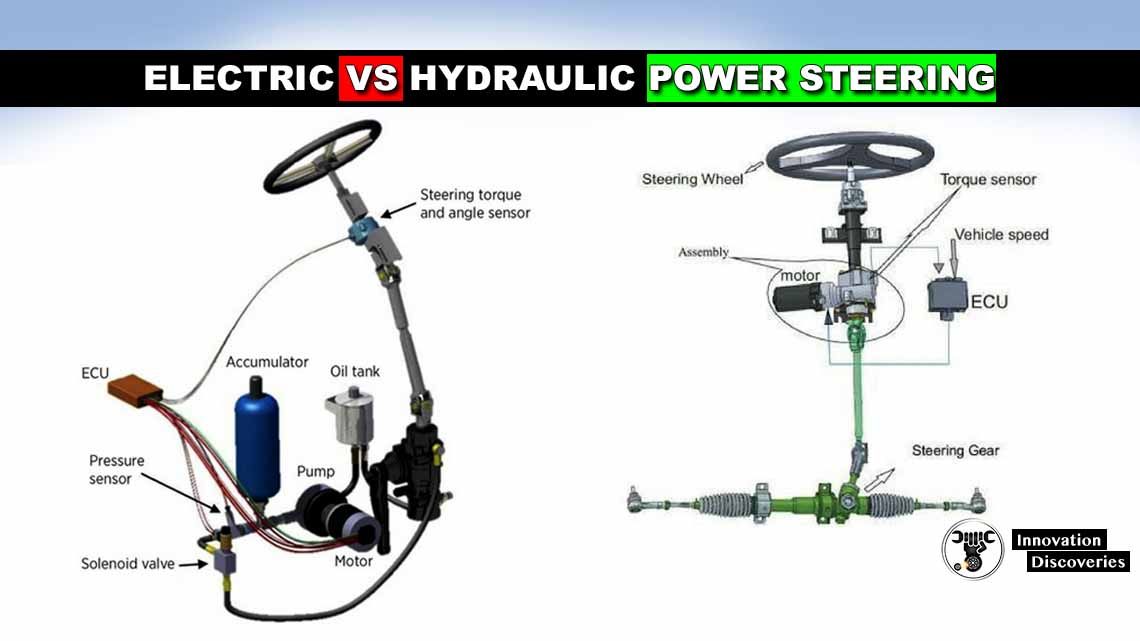 Unlike others here, Mitsubishi’s Dynamic Four wasn’t a lone system, it also included four-wheel drive, four-wheel steer, four-wheel independent suspension, and four-wheel ABS, hence the name.
Unlike others here, Mitsubishi’s Dynamic Four wasn’t a lone system, it also included four-wheel drive, four-wheel steer, four-wheel independent suspension, and four-wheel ABS, hence the name.
Launched in 1987, the Galant VR-4 was the genesis for not just the 3000GT but also the almighty Lancer Evolution. And this proto rally car not only spawned Dynamic Four but also Active ECS for the two-wheel-drive models, the first active suspension system on the market. Mitsubishi saw the two as opposite sides of the same coin and labeled the umbrella its Active Footwork System, which is a great name for a set of systems.
According to the Galant’s original news release: “The Active Footwork System adopted for the Galant this time is a generic name for the Active Four (four-wheel-drive models) and Active ECS (two-wheel drive), which mainly consist of the following suspension systems to create more room for driving from low to high speeds and to make driving itself easier in the age of high performance. It is a revolutionary new system that further improves the vehicle’s dynamic performance in terms of accelerating, cornering, and braking by increasing the grip between each tire and the road surface.”
It is a revolutionary new system that further improves the vehicle’s dynamic performance in terms of accelerating, cornering, and braking by increasing the grip between each tire and the road surface.”
As for the four-wheel-steering system, according to the release, it’s a fully hydraulic system that is sensitive to vehicle speed and steering force to further improve steering response in the medium to high speed range. How that works is through hydraulic pressure sent to the trailing-arm joints of the rear suspension up to 1.5 degrees, although that depends on the steering force and vehicle speed of more than 31 mph.
The original press release on four-wheel steering., MitsubishiThree years later, Mitsubishi introduced the 3000GT (GTO in Japan) with Active Footwork System and the tagline, “The GTO. Designed to enable drivers of all abilities to enjoy its high levels of performance — safely, enjoyably, and as their fancy takes them.”
According to the GTO’s original Japanese press release, the four-wheel-steering system worked as such: “A hydraulic actuator is connected to an intermediate joint on the end of the trailing arm. The actuator is regulated by a rear-wheel-steering pump linked to the front-wheel power-assist hydraulic circuit, so that the rear-wheel steering angle is proportional to front-wheel steering effort. The rear-wheel steering angle is proportional to vehicle speed because the rear-wheel steering pump supplies oil in amounts relative to the rotational speed of the rear wheels.”
The actuator is regulated by a rear-wheel-steering pump linked to the front-wheel power-assist hydraulic circuit, so that the rear-wheel steering angle is proportional to front-wheel steering effort. The rear-wheel steering angle is proportional to vehicle speed because the rear-wheel steering pump supplies oil in amounts relative to the rotational speed of the rear wheels.”
Paired with either a naturally aspirated V-6 or a twin-turbocharged V-6 in the 3000GT VR-4, the 2+2 sports car was built to go up against the Skyline GT-R, Supra, and RX-7, and also came with active aerodynamics both front and rear. The 3000GT/GTO’s release also came during the “gentleman’s agreement” period of Japanese performance cars, which meant that performance cars were limited to about 276 horsepower, at least on paper. A more accurate number for the 3000GT VR-4, however, was likely 300-350 horsepower.
What’s interesting is that although some of these systems transferred to the newly named Super All-Wheel Control (S-AWC) system for the Mitsubishi Lancer Evolution, the direct descendant of the Galant VR-4, it didn’t bring over the four-wheel steering system — nor did the Pajero Evo.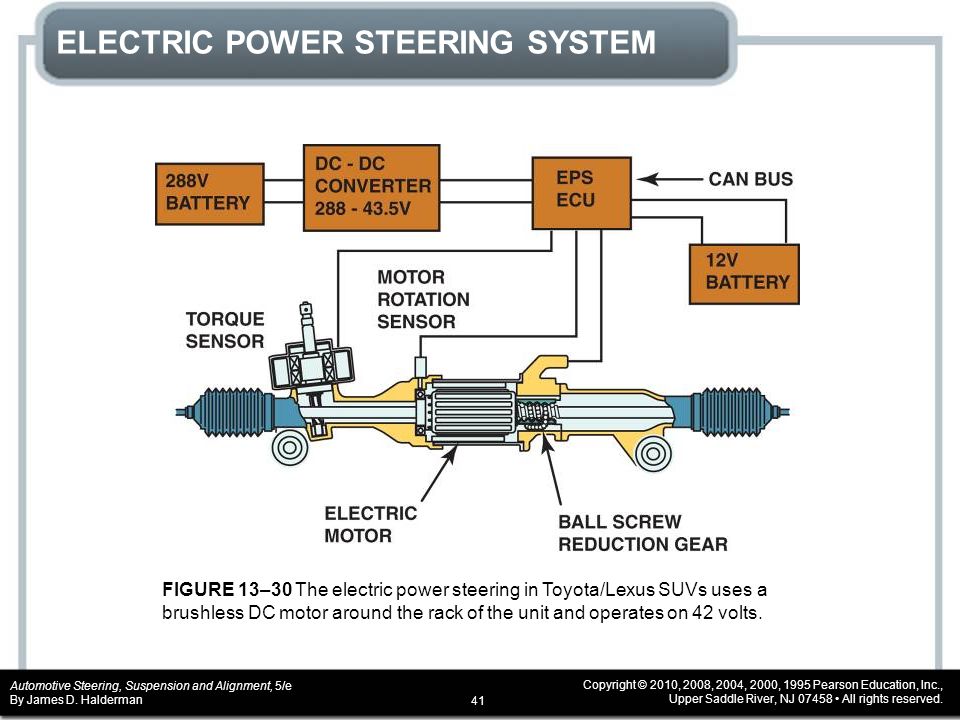
Quadrasteer from General Motors is definitely the oddball of the group, but it deserves some attention as the first application to full-size pickup trucks. Unfortunately for GM, it didn’t last long.
Trucks in the U.S. are big business. That may be the understatement of the decade, but the amount of research and development spent on one-upping the competition is wild. Everything is on the table in terms of what manufacturers can offer its consumers to lure them away from other makes and models. In 2002, GM became obsessed with the idea that four-wheel steering was the next big thing. Welcome to Quadrasteer.
In the original news release from 2002, GM states: “General Motors has taken the industry lead by offering the Quadrasteer four-wheel-steering system for the first time in a full-size truck. The innovative system, which makes driving a truck safer, easier, and more convenient, will debut on the GMC Sierra Denali full-size pickup in the fourth quarter of 2002. Quadrasteer marks a milestone in full-size truck handling and control. It’s an electromechanical system that turns the Sierra Denali’s rear wheels (up to 12 degrees) in relation to the front wheels, resulting in unprecedented low-speed maneuverability and high-speed stability.”
The innovative system, which makes driving a truck safer, easier, and more convenient, will debut on the GMC Sierra Denali full-size pickup in the fourth quarter of 2002. Quadrasteer marks a milestone in full-size truck handling and control. It’s an electromechanical system that turns the Sierra Denali’s rear wheels (up to 12 degrees) in relation to the front wheels, resulting in unprecedented low-speed maneuverability and high-speed stability.”
Unlike other four-wheel steering systems, GM’s was selectable, allowing for the usual front-wheel steering as well as four-wheel steering. Along with these modes, GM also included a four-wheel-steer towing mode, all of which was actuated by a set of buttons on the dash. According to that release, “Quadrasteer operates by sensing the driver’s desired steering input by way of a steering-wheel-position sensor. This information is fed to a microprocessor that determines the appropriate rear-wheel angles, based on steering input and vehicle speed.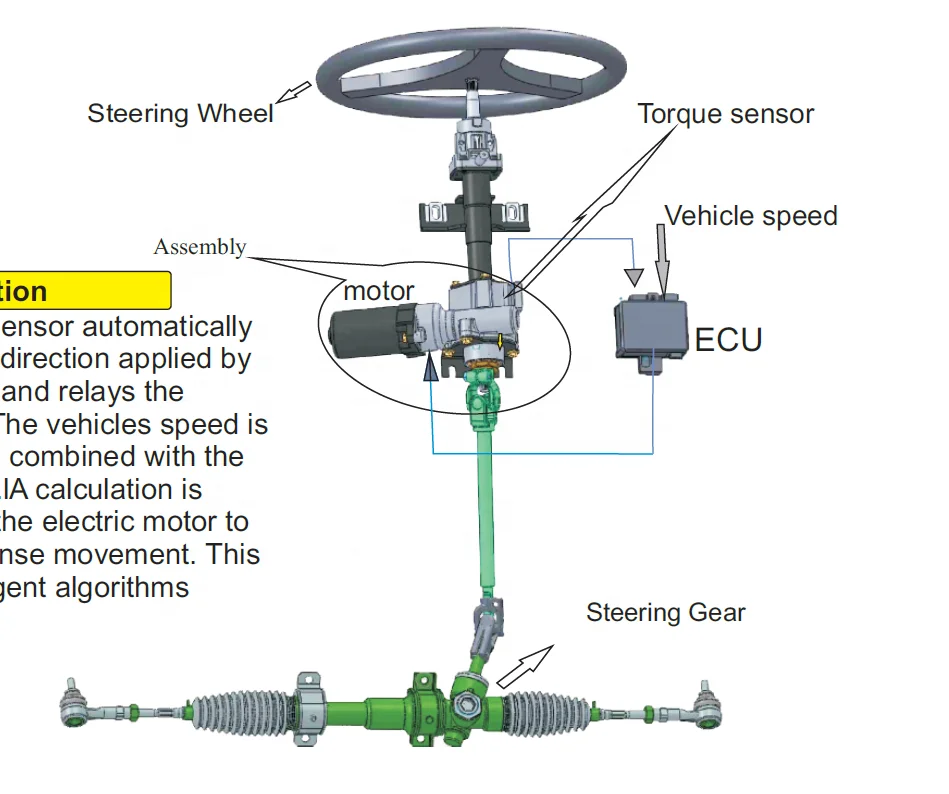 The microprocessor feeds its data to an electric motor, which, based on algorithms, drives the rear steering rack through a planetary gearset. If a system failure is detected, Quadrasteer’s failsafe mechanisms revert to two-wheel steering.”
The microprocessor feeds its data to an electric motor, which, based on algorithms, drives the rear steering rack through a planetary gearset. If a system failure is detected, Quadrasteer’s failsafe mechanisms revert to two-wheel steering.”
Despite the benefits of four-wheel steering on a full-size truck, GM killed the program after 2005. Only the GMC Sierra, Sierra Denali, and Yukon, as well as the Chevrolet Silverado and Suburban, could be equipped with Quadrasteer, which cost $5,600 at launch, although that was reduced to $1,000 before the program was axed.
As you can imagine given the benefits of rear-wheel steering in heavy cars, most manufacturers offer some form of rear-wheel steering.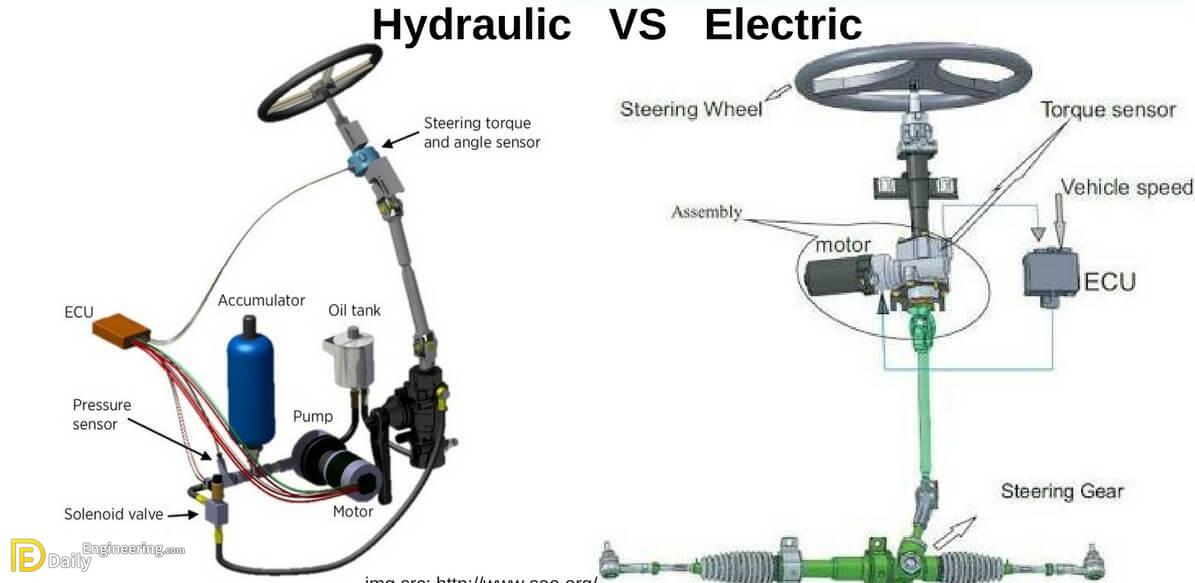 No two systems are the same, however, nor do they have the same designation.
No two systems are the same, however, nor do they have the same designation.
To better understand the systems, here are the manufacturers that offer them and what they’re called.
 , Porsche
, Porsche This is one topic that’s better illustrated in video form since rear-wheel steering systems are complicated pieces of technology. Here’s one from our friend, Jason Fenske of Engineering Explained.
Here’s one from our friend, Jason Fenske of Engineering Explained.
You’ve got questions. The Drive has answers.
A: All-wheel drive is when the vehicle’s power can be sent to all four wheels, to some degree. All-wheel steering is a system that allows your car’s four wheels to turn.
A: It is. These systems enhance both low- and high-speed stability and agility, so they’re always on to assist in your car’s performance and function. Rad.
A: The very first four-wheel-steering system was developed in 1893 by the British engineer Joseph Diplock. He patented the first four-wheel drive, four-wheel steer system as well as the pedrail wheel.
We’re here to be expert guides in everything “how to” related. Use us, compliment us, yell at us. Comment below, and let’s talk. You can also shout at us on Twitter or Instagram or reach us all here: [email protected].
ATV riding techniques could be the subject of a full book. In the same article, we want to reveal to you the basics of safe riding. At first glance, there is nothing complicated in driving ATVs - you just need to steer and enjoy riding.
When driving over bumps, for example, those of the "wave" type, the driver must change his position all the time. So, when approaching an obstacle, you must shift your body back, otherwise you can hit the obstacle with your wheels. When driving over a bump, you need to move the body back forward, thus preventing excessive separation of the front wheels, i.e. rearing up the ATV. Then, when the rear wheels come off the ground, you need to move back again, otherwise you can fall out of the saddle, hitting your knees on the steering wheel.
Moving in a straight line at low speeds (up to 40 km/h), you can afford to relax. But at higher speeds or when passing sharp turns and slopes, the driver must move very actively. Indeed, due to the high center of gravity, short wheelbase and small width, ATVs are very prone to rollovers. In addition, if the motorcycle flies separately from the motorcyclist during falls, then the ATV most often covers the driver. Therefore, in order for ATV riding not to end with serious injuries, it is necessary to study the driving rules and strictly follow them.
ATV rider's weight is an important factor that affects machine handling. By shifting their weight, the driver can unload or load the front or rear of the ATV, thus compensating for centrifugal forces.
The first rule you need to learn is that when riding an ATV, you need to relax your arms. When driving, the driver can always let go of his hands, because his legs are holding him in the saddle. As the speed increases, the load on the legs also increases.
Conventionally, three racks are distinguished. The middle stance is used when driving in a straight line without turning. When opening the gas, the body must be moved forward to unload the hands. Thus, the front strut is obtained. When braking and closing the gas, the body, on the contrary, must be moved back, i.e. take a back seat. By the way, the word "stand" comes from the word "stand", and this name is not accidental. When actively riding an ATV, you do not have to sit. Standing on an ATV lowers your center of gravity. After all, there is a huge difference between the weight on a high saddle and the weight on the footrests. And the effect of moving the body in a standing position is much greater than from fidgeting back and forth on the saddle.
When going through a turn on a motorcycle, it is tilted inward, thus struggling with centrifugal force. But you can't do that with a quad bike. Therefore, it is necessary to use the weight of the driver. The main rule here is to always transfer the weight inside the turn. Moreover, it is necessary not only to tilt your shoulders. It is necessary to hang the entire body, including the fifth point. Only the shin and knee hold on to the saddle. Of course, if you turn at minimum speed, then you can limit yourself to turning the steering wheel.
The correct stance is characterized by slightly bent knees, elbows set apart, and a slightly arched and relaxed back. Why not stand on straight legs or keep your back straight and tense? Because bent knees allow you to absorb shock coming from uneven terrain. By the way, the force of these blows is sometimes quite enough to knock the driver out of the saddle. A straight tense back under such conditions can lead to injury to the intervertebral discs and even a compression fracture of the spine. Yes, and the internal organs with the wrong fit will have a hard time.
Active ATV riding requires good physical shape. So, in quad schools, the duration of the lesson does not exceed an hour, and at the end of the lesson, students can literally be squeezed out. And riding an ATV off-road is also an activity worthy of training in the gym.
When riding non-sport ATVs, it is best to avoid jumping. Firstly, this way you can break the ATV. Secondly, in order to safely perform such tricks, the ATV motor must have high-torque and fast response to the throttle. If, nevertheless, the jump could not be avoided, then it is necessary to land in the middle stance, but be ready to move to the back. When the wheels touch the ground, you need to slightly open the gas. It is better not to use four-wheel drive when jumping.
Every time you ride an ATV, you need to practice looking into the distance. This is necessary to develop the habit of evaluating the trajectory of movement in advance. Beginners often do not have time to track the road, and at some point they are not ready to perform adequate actions. And another, very predictable obstacle, can become a problem for them.
| When moving along a slope, it is necessary to move the body in the direction opposite to the slope. On the steepest sections, full overhang should be used, such as when cornering at speed.
|
Before you start climbing, you need to pick up speed. Then the resulting inertia will allow you to smoothly drive into the steepness. If you suddenly open the gas directly on the rise, the ATV may tip over. Climbing should be in the most forward stance and on medium gas. If the incline is too steep, the ATV may roll backward when the throttle is released. In this case, you should not brake with the front axle, not the rear. If the ATV starts to roll over, you can try to jump to the side, but this acrobatic stunt is unlikely to be successful.
If the driver moves his torso out of the turn, then his centrifugal forces will pull him to the outer radius, and in order to stay in the saddle, he will need to firmly grip the steering wheel. At the same time, the ATV will definitely try to roll over. To avoid such an unpleasant situation, it is always necessary to remember a simple rule - to shift the body only in the direction of rotation. Those. if we turn to the left, then we shift the body to the left side, and vice versa.
Descents must be made in the C-pillar. In this case, the arms must be extended and slightly bent at the elbows. There is no emphasis on the hands, you can even let them go, holding on with your feet. The steeper the descent, the more the driver must move the body back. The lower photos show the consequences of a descent in an incorrect landing. The main mistakes - the driver shifted the weight forward and pressed his hands to the body.
To start an electric start engine, turn the ignition key to the ON position, press the brake and press the green electric start button for no longer than 5 seconds.
ATVs usually shift automatically - the shift lever is used to select high, low, neutral or reverse gears, as well as select the parking mode.
To start or increase speed, you need to press the thumb of your right hand on the throttle. The gearbox must be in the “H” or “L” position. The middle finger of the right hand rests on the front brake lever while driving, and the middle and index fingers of the left hand rest on the rear brake lever.
Also on the steering wheel there are buttons for turning on the four-wheel drive and locking the differential. Four-wheel drive will be needed when driving off-road, slippery roads, transporting goods and towing. A differential lock is needed so that the wheels of the ATV spin synchronously - for example, it will help to drive out if one of the wheels is stuck in the mud, and the second remains on a stable surface. When the lock is off, in such a situation, only the wheel that is stuck will spin.
Whether it is possible to turn on the four-wheel drive and blocking on the go and at what speed - should be indicated in the instruction manual. At the same time, regardless of the model of the ATV, the lock cannot be turned on after a jam, since the differential gears must engage without load.
1 - ignition key. 2 - starter button. 3 - light switch. 4 - signal.
1 - throttle lever. 2 - switch 2WD / 4WD. 4 - fuse.
1 - throttle lever. 3 - 4WD / LOCK differential lock switch. 4 - fuse.
Standing up makes it easier to avoid the ATV tipping over by shifting your body weight. There are 3 main racks:
The worst variant of the stance is when the back is tense, the person leans on his hands, and his legs are straight. In this case, the body does not absorb shocks and shocks, and the bones, intervertebral discs and joints experience a strong load. In addition, control over technique worsens and fatigue increases.
middle rack
A-pillar
rear pillar
To climb, you need to shift into a low gear, take the front stand and drive at medium engine speeds. It is impossible to sharply press the gas when driving up a slope or mountain - there is a risk of rolling over.
When stopping in the middle of a hill, drive off carefully, as a sudden start will be followed by tipping over. If the ATV rolls backwards, you need to press the front brake lever, and after stopping, turn off the engine, put the equipment on the handbrake, turn around manually, slide down and try again.
To descend, you need to take the rear rack and shift into a lower gear. In order not to roll over, brake should be simultaneously front and rear brakes. To avoid skidding, you can not change the trajectory of movement and speed abruptly, as well as brake too hard. It is better not to touch the gas lever when descending.
To drive downhill, shift into low gear and shift your body weight towards the top. Don't hit the gas hard and don't brake hard. You can also fall when making a sharp turn. If the slope is steep and the ground on it is slippery, it is better not to risk it.
To enter a tight turn, lean on the outside footrest and tilt your upper body inward. On slippery surfaces, shifting forward will improve handling, and shifting back will improve the grip of the drive wheels with the road.
Before driving into deep mud, you need to make sure that there are no logs, large stones and other obstacles in it, and the soil is not marshy. You should drive smoothly, without sharp pressure on the gas lever. At a slow speed, high engine speeds should not be allowed - the wheels will begin to slip and dig deeper. If the ATV has sunk deep into the mud, after releasing it, you need to dry the brakes with a few clicks on the levers.
To estimate the trajectory of the ATV in advance, you need to look into the distance and not fix your eyes on any one object.